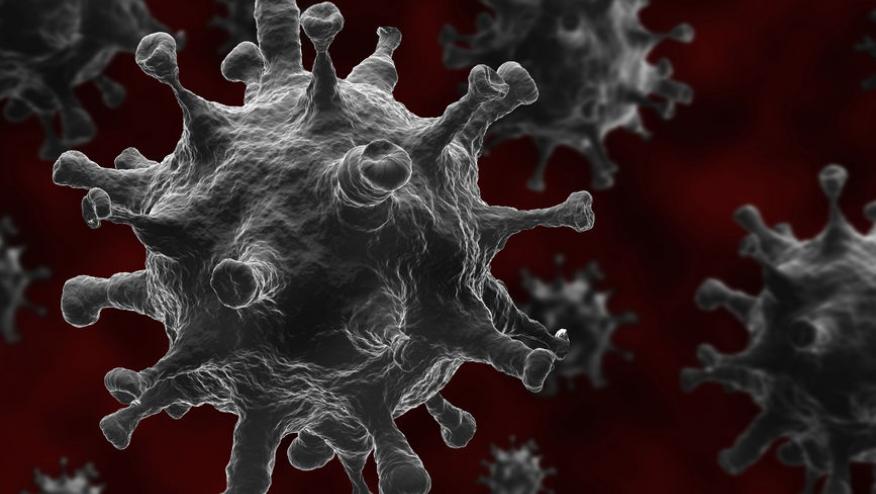COVID-19 Systemic Involvement Save

The presentations of the COVID-19 infection have been clearly chronicled with the worrisome onset of sore throat, dry cough, loss of smell and taste with fevers, myalgias, fatigue and the worrisome progression of pulmonary involvement in a minority. Lab findings may include a leukocytosis, lymphopenia, and elevated LDH and hepatic enzymes.
Nevertheless there are several other organ systems that can be involved.
Cutaneous
A recent series of 88 patients from Italy found 20% with skin manifestations; half at onset, the rest during hospitalization. This included erythematous rash (14 patients), widespread urticaria (without pruritus; 3 patients) and chickenpox-like vesicles (1 patient).
CNS
COVID-19 is not known to directly enter or affect the brain but there have been cases of “encephalopathy” that have been directly or indirectly ascribed to the virus. There are several reports of acute necrotizing encephalopathy rarely complicating COVID-19 infected patients. What has been described - symmetric, multifocal lesions found at the brain stem, cerebral white matter, cerebellum, and thalamus w/ internal hemorrhage. Postulated causes for this include direct viral invasion or tissue and vascular consequences of those with the cytokine storm syndrome. https://bit.ly/2XopFHQ https://bit.ly/2JOJgsM
The NEJM has a correspondence report of three COVID infected patients, who developed peripheral and central infarcts with antiphospholipid antibodies. These cases were described in China and were severely affected with respiratory failure and mechanical ventilation and during their COVID-19 hospitalization developed cerebral infarcts and peripheral ischemia as well. They were found to have IgA anticardiolipin antibodies as well as anti–β2-glycoprotein I IgA and IgG antibodies.
Gastrointestinal
GI symptoms may be present in a minority at presentation; but several series have noted more prominent GI involvement. Common features include (in 3-24% of cases), nausea (10-18%), and vomiting (less than 4%). Increased LFTs are seen in up to one-third of patients. Interestingly of those with GI symptoms, 28% may not have respiratory symptoms. Studies of infected persons show that the coronavirus has been found in stool samples. https://bit.ly/2XnpuNd Gastrointestinal manifestations were recently reviewed in the journal, GUT
Cardiac
Numerous studies have suggested that patients with existing cardiovascular disease (CVD) may be more prone to severe outcomes, hospitalization, etc. if infected with COVID-19. COVID patients requiring intensive care unit (ICU) admission appear to be more likely to have CVD as comorbidity. The thinking is that CVD is a surrogate for those with immunologic aging or dysregulation. Moreover, CVD patients have higher expression of ACE2, which may enhance susceptibility to SARS-CoV2 – ACE2 receptors are a first step in COVID binding to a cell. In addition, it is estimated that acute cardiac injury (acute myocarditis or heart failure) occurs in 8-12% and is the most reported cardiovascular abnormality in COVID-19. Myocardial injury is possibly due to viral invasion of cardiomyocytes and/or the effect of systemic inflammation.
Cytokine Storm
This was recently well reviewed in the Rheumatologist by Dr. Randy Cron who appropriately calls out the cytokine storm syndrome (CSS) for what it is – Macrophage Activation Syndrome. COVID-19 patients who develop the CSS have rapid deterioration with fever, confusion, respiratory distress and multi-organ failure. Their laboratory findings are similar to that seen in HLH and MAS - hyperferritinemia, lymphopenia, prolonged prothombin time, elevated lactate dehydrogenase, very high interleukin IL- 6 and C-reactive protein levels, and elevated soluble CD25. Thus many of these patients meet current criteria for HLH and MAS. Not surprisingly current treatments are similar – anti-IL6 antibody therapy, and there are a number of enrolling clinical trials evaluating the use of anti-IL1 therapies as well. Other HLH and MAS stop gap therapies haven’t yet been discussed including the FDA approve anti-interferon agent emapalumab or calcineurin agents (cyclosporine) or etoposide.










If you are a health practitioner, you may Login/Register to comment.
Due to the nature of these comment forums, only health practitioners are allowed to comment at this time.